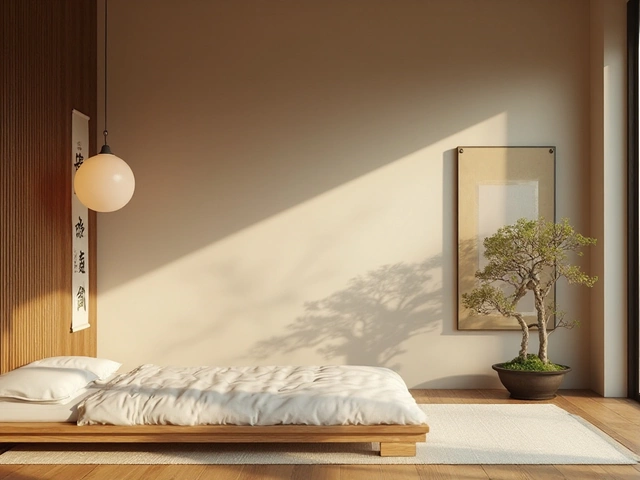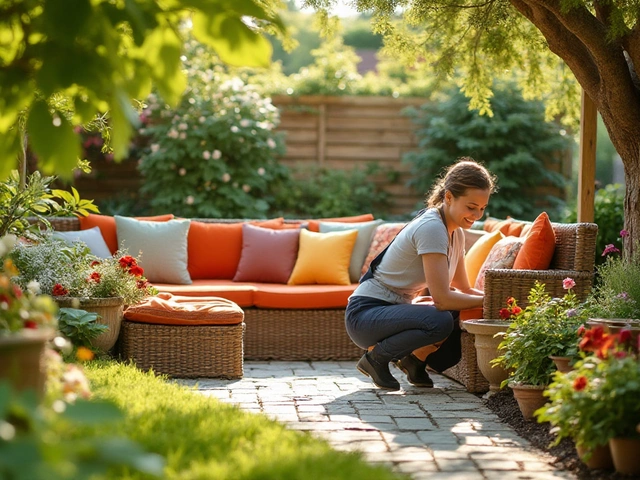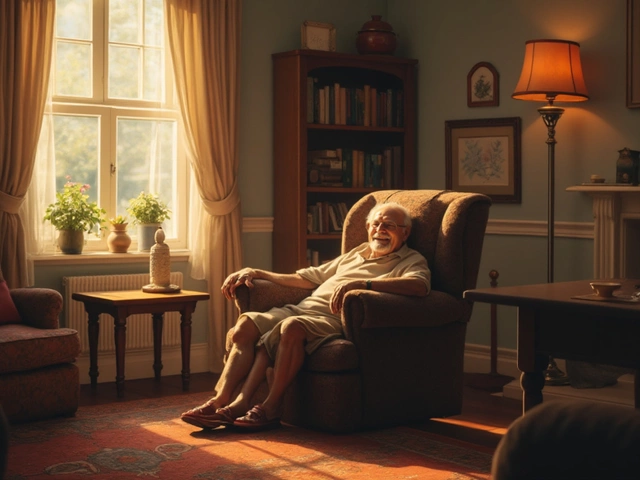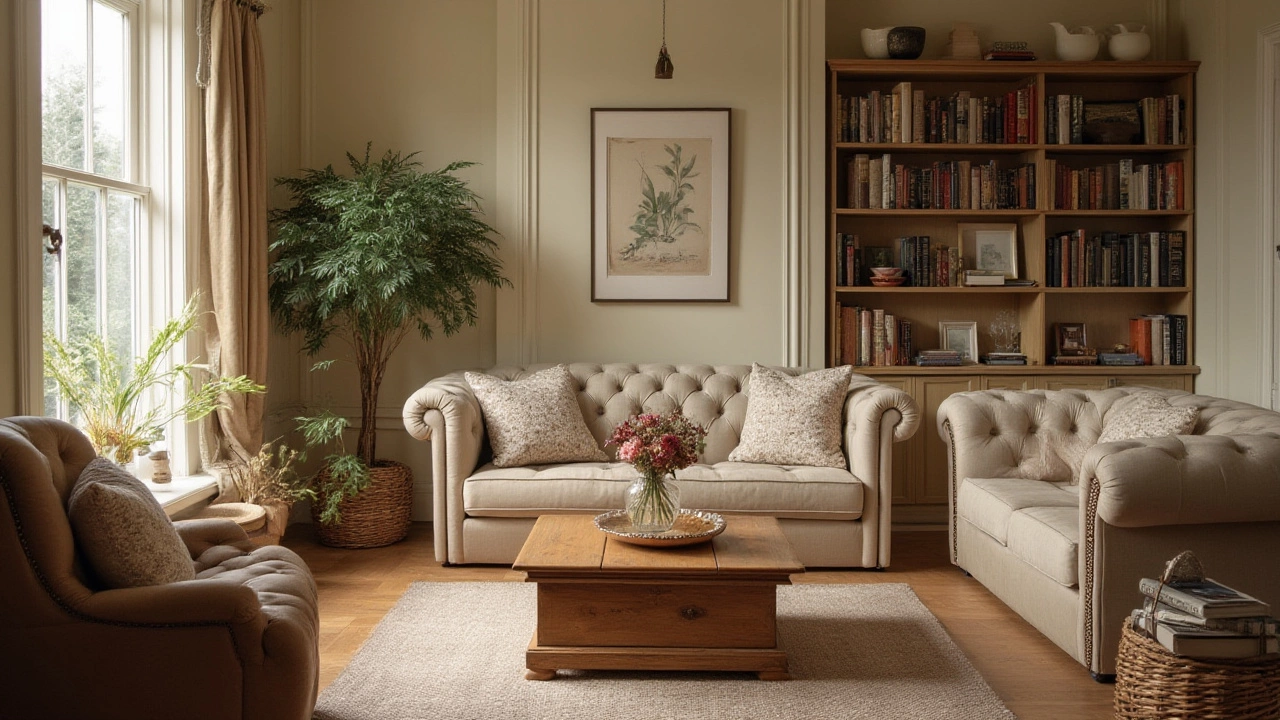 7
Jul,2025
7
Jul,2025
Bargain prices and shiny showrooms can trick even seasoned shoppers. Ever seen an armchair that looks gorgeous, but a week later feels like you’re sinking into a marshmallow? The secret to great furniture isn’t just style or price—it’s substance. Recognising top-tier quality takes more than a quick glance or a clever sales pitch. Hundreds of thousands are wasted every year on pieces that just don't last. And honestly, shopping for furniture should be fun, not a gamble.
What Sets High Quality Furniture Apart?
The line between quality and mediocrity often comes down to hidden details. Most of what makes a piece great isn’t obvious at first sight. Let’s start with the frame. Solid wood (like oak, beech, or maple) is the gold standard for long-lasting sofas or chairs. Particle board, MDF, or plastic lowers cost but drags down durability hard. Quality makers use mortise-and-tenon or dovetail joints—basically, old-school joinery that’s built to withstand years of wear. Furniture held together solely by staples or visible nails? That's a red flag. Slides and hinges make a quiet difference, too. On dressers, smooth-moving metal slides signal better construction than cheap plastic. Test drawers: do they pull out easily without wobbling? High-end cases often use soft-close hardware. Speaking of drawers, flip one over (if the shop lets you) and look for dovetails—a zigzag joint that says someone actually cared. Many mass-market drawers are literally glued and tacked, which spells out a short lifespan. The finish matters. A good stain or lacquer feels even, isn’t sticky, and doesn't show blotches. Run your hand along the grain or the edge—cheap paint jobs feel rough or have weird bubbles. And on solid wood, minor nicks can be fixed by sanding and restaining; on veneered particle board, one scratch often means disaster. According to Furniture Today, around 62% of high-end retailers say solid or veneered woods remain the most reliable foundation for lasting pieces. Upholstery is another dead giveaway. Bright prints and trendy fabrics look fun but might pill, snag, or fade fast unless there’s something sturdy behind them. Cotton blends and true leather tend to outlast synthetics, but check the threads—even spacing and tight stitching spell quality. Weight often means durability. Pick up a dining chair—does it feel heavy for its size? Lighter ones might have hollow or cheap materials inside. The bottom line: well-made furniture feels solid, works smoothly, and finishes clean. These qualities add up to a piece you’ll actually want to keep.
Materials: The Foundations of Lasting Furniture
Every street in Melbourne tells a story: rusty metal patio sets, weathered benches, and battered sofas left out for hard rubbish collection day. The materials hiding beneath the finish will make or break a piece, especially when it comes to high quality furniture. Solid wood furniture gives you resilience against knocks, chips, even clumsy moves downstairs. Oak, walnut, cherry, and ash top the charts for strength. You might spot tropical hardwoods (teak, mahogany) that resist moisture and pests, which is great for humid bathrooms or those damp coastal homes down in Brighton. The cost hits the wallet, but the payoff is measured in decades—not months. Veneers get a bad rap, but not all veneers are created equal. A high-quality veneered piece uses a thin layer of real hardwood fused to a strong core like birch ply. Properly done, these pieces stay straight, don’t warp, and are lighter than solid blocks. What you want to avoid is cheap veneer over cardboard-like substrates, which crumble at the first hint of moisture. Then there’s metal. Steel and wrought iron show up in outdoor furniture and as framework—they shrug off years with a proper coating. Aluminum is light and resists rust, though sometimes feels unstable or cheap if used wrong. One quick test: check for welded joints instead of screws or bolts at stress points, especially if you see a coffee table in an industrial style. Modern plastics—polycarbonate, ABS—aren't all junk. Polycarbonates can make a chair last ages outdoors but shy away from thin plastic parts on indoor furniture—they're prone to cracks or snaps. Look for plastics with UV stabilizers if you plan to leave them in the sun. Glass-topped tables? Tempered glass is hardened for safety, while regular glass can shatter if you so much as set a mug down too fast. Hidden parts matter too. Inside a sofa, high-resilience foam bounces back and holds its shape for years, unlike the crumbly stuff in ultra-budget finds. In a now-classic Which? Magazine consumer test, only high-resilience, high-density foams passed the "sit-and-stand" test after 10,000 cycles. Down or feather-blend cushions feel luxurious, but need fluffing and cost more to maintain. High quality webbing (polyester or rubber) gives the seat its shape—nylon straps slacken quickly and make you sink like a stone. Springs tell their own story: eight-way hand-tied springs are the best, but sinuous (zigzag) springs can be fine if mounted tight. Fabric makes a huge difference, especially if kids or pets are a factor. Seek out double-rub ratings (on tags) for toughness—Wyzenbeek or Martindale tests show whether a material can weather real-life traffic. Go for at least 15,000 double rubs for average use; high-performance fabric tops 30,000, no sweat. Leather always wins with longevity, but steer clear of "bonded" leathers that peel. Here’s a useful table for quick material comparison:
| Material | Strength | Lifespan | Best Use |
|---|---|---|---|
| Solid Wood (Oak, Walnut) | High | 20+ years | Frames, Tables |
| Plywood | Medium-High | 10-15 years | Undersides, Case Backs |
| Metal (Steel, Iron) | Very High | 20+ years | Frames, Outdoor |
| High-Resilience Foam | Medium-High | 8-10 years | Sofa Cushions |
| Performance Fabric | High | 5-15 years | Upholstery, Kids Areas |
Look past the polish and paint, and the true story of your furniture starts with what’s inside.
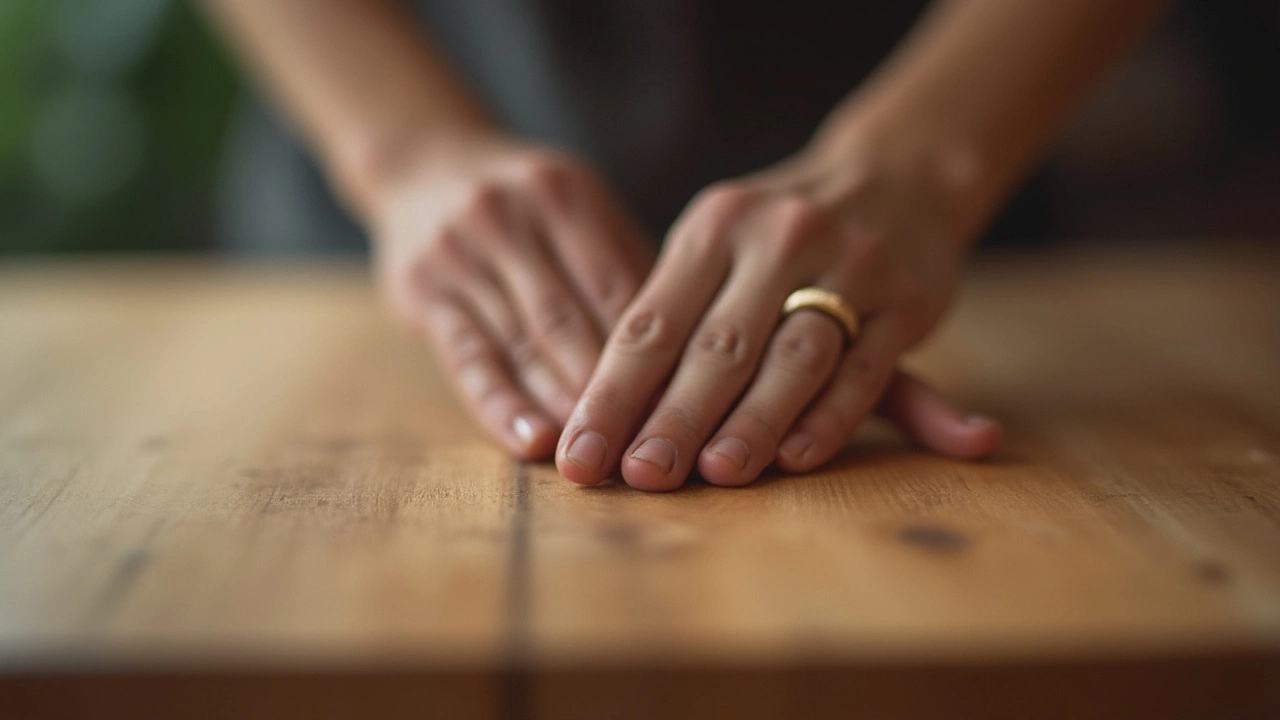
Signs of Quality: How to Inspect Before You Buy
No need for a toolbox—just a sharp eye and a willingness to get hands-on. Start by gently shaking a display chair or wiggling a table. Any wobble means loose joints or cheap connectors. Next, look underneath—a factory sticker might list materials, but physically check if it's solid, veneered, or particle board. Run your hand along the underside and inside of drawers—quality furniture doesn’t skimp here. Even the hidden parts should feel considered, with no splinters or excessive glue. If you see rough edges or feel staples, back away for something better. Open and close all moving parts. Drawers should pull smoothly with even gaps all the way round. Doors on sideboards shouldn’t sag or squeal. With sofas and armchairs, press on corners and arms. Nothing should creak or shift. Zippers on cushions let you inspect foam or batting—chintzy pieces use loose fill (like pillow stuffing) that flattens out in no time. Flip a chair upside down and look for corner blocks—these are small, diagonal pieces of wood attached at each corner for stability. Most "fast furniture" skips this step to save on production time. On tables, check the top for evenness. If you spot significant warping, step away—this can get worse later. Try the "credit card test": slide a card or key across the surface. It should glide without catching. Check for matching grain patterns if it’s supposed to be solid or veneered—obvious repeats suggest the cheapest option was chosen. For fabric and finish, hold up to light and examine closely. Uneven color, pilling, or loose threads mean shoddy craftsmanship. Look for double-stitched seams and tight piping on edges. “With all good furniture, you should be able to turn it upside down and see as much care on the bottom as on the top,” says interior design expert Kate Watson-Smyth in her book, Mad About the House.
“Quality is never an accident. It is always the result of intelligent effort.” — John RuskinDon’t be shy about asking for swatches or technical info—honest sellers are proud of their materials and happy to brag about them! Look for warranties or repair options (good shops often offer reupholstery or refinishing). High quality lasts, and brands know it. And when in doubt, check for certifications: products with FSC (Forest Stewardship Council) or GECA (Good Environmental Choice Australia) labels use sustainable, safe materials.
Shopping Smart: Proven Tips to Find Durable Furniture
So where can you find pieces actually worth your money? Sure, those mega-retailers have massive selection, but the true treasures often hide in smaller local shops, vintage stores, or from independent makers bustling around Fitzroy or Collingwood. Don’t ignore the pre-loved market—classic furniture from decades past often beats the socks off today’s fast furniture, both in build and style. Start with brands: Hunt down reviews, not just slick photos. Brands like Jardan, King Living, and Space are known in Australia for mixing style and durability. Even IKEA has a few hidden gems (look up the timeless POÄNG chair), but know what to avoid—models with cardboard inside won’t last long. Whenever possible, talk to people who have owned the piece for a while—real-life reviews beat marketing every day. Don’t be afraid to bargain. Sometimes quality pieces at smaller outlets are negotiable, especially at the end of seasons. For online shopping, read the specs with a magnifying glass. Listings that hide frame or fabric details, or don’t show inside construction, are best left alone. Demand sample swatches if the fabric matters. Many good-modern Australian brands let you order these free. Check the returns policy: if they stand by the product, you’ll get a decent window for returns or a solid warranty. Always take measurements. Quality doesn’t fit if it’s a headache to get into your space! Think ahead about use—kids, pets, or lots of guests? Go for tougher, darker, or patterned materials that hide wear. Softwoods like pine are fine for accent tables but don’t expect them to survive party season unscathed. Pay close attention to weight limits and assembly instructions—in-home delivery and set-up is worth the small extra fee for heavier, solid pieces. Test, test, test. In person, sit on sofas for at least five minutes. Bounce, recline, swivel—see if it squeaks or sags. Try folding out sofa beds or extending dining tables. If you end up shopping at big-box chains, skip the display models up front (they're often reinforced for the showroom); ask to test a fresh floor model if possible. Finally, trust your gut. That thrift store find with real craftsmanship? It might just be the star of your living room after a little TLC. Quality furniture isn’t always expensive, but it's always worth the hassle to find. Next time you see a splashy sale, look underneath the shine. Good design stands the test of time. And honestly, there’s nothing better than flopping down at the end of the day on a seat that feels—and is—built to last.

